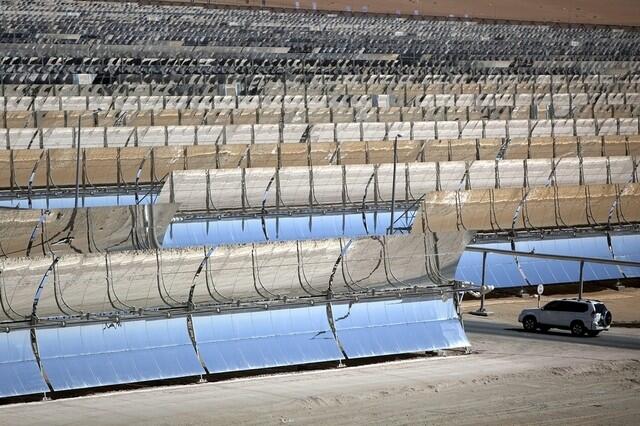Producing electricity from the sun and wind is about to get even cheaper around the world with the UAE helping to further drive down costs, according to the International Renewable Energy Agency (Irena).
The Abu Dhabi-based organisation released a report yesterday projecting the cost of renewable energy to drop, in some cases by more than half the price of current averages by 2025.
“Given that solar and wind are already the cheapest source of new generation capacity in many markets around the world, this further cost reduction will broaden that trend and strengthen the compelling business case to switch from fossil fuels to renewables,” Irena director general, Adnan Amin, said on the release of its report titled The Power To Change: Solar And Wind Cost Reduction Potential To 2025.
Since 2011, renewable energy power generation technologies have made up for at least half of the total new power generation capacity added worldwide. And last year alone a new record was set with around 148 gigawatts of renewable energy power added, meaning that many millions of homes are now being powered by solar, wind and hydropower.
The levelised cost of electricity, or a measure of comparison for various power generation methods, for wind could fall by 35 per cent. However, the major winner in terms of lower costs is solar, including photovoltaic (PV) and concentrated solar power (CSP) applications, which could drop by as much as 59 per cent and 43 per cent respectively during the next 10 years.
The cheaper rates for solar applications can be attributed to evolving technology as well as the wide scale rollout. The UAE is leading the charge in the region. Dubai is developing a 5GW solar park using a mix of PV and CSP and has been driving down prices with record low bids submitted for its construction phases for PV.
Michael Taylor, Irena’s renewable costing analyst, said that CSP had more room to drop in pricing as only 5GW was installed worldwide by the end of last year, compared to 220GW of PV.
Irena said that CSP costs could fall to between 8 US cents per kilowatt hour (kWh) and 12 cents per kWh depending on the location and solar resource quality. Regionally, the lowest cost was in Morocco at around 15 cents per kWh.
“Dewa’s recent announcement of a first tender for 200 MW of CSP to be operational in 2021, is another reminder that CSP can offer competitive electricity and generation flexibility in areas with excellent solar resources, strong civil engineering companies and a stable regulatory and financing environment,” he said. “Projects with access to lower costs of capital, as might be expected for many Gulf countries, could see electricity costs even lower than this range.”
Yet CSP applications have specific obstacles to overcome compared to PV, said Hadi Tahboub, president of the Middle East Solar Industry Association. “Dubai wants to tell the world: ‘Yes, it can be done,’ and this is a good thing because it literally drives [research and development] forward, lowers costs and creates more competition. But CSP is a totally different game of parameters,” he said, adding that CSP technology required more land than PV plants by a ratio of roughly 10 to 8.
Source: The National











